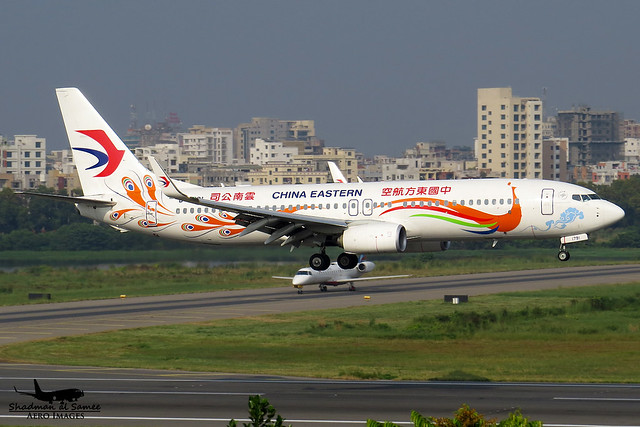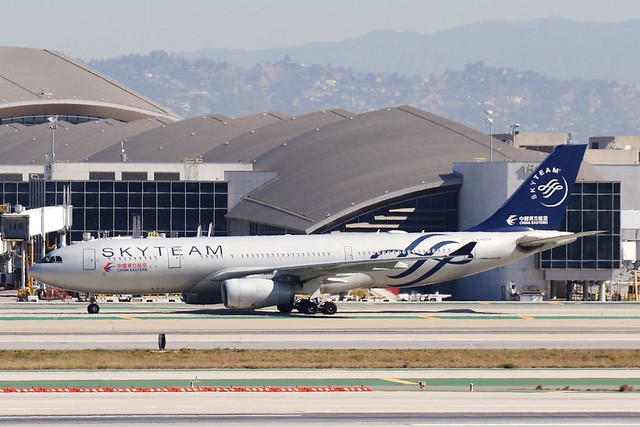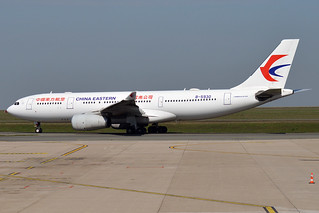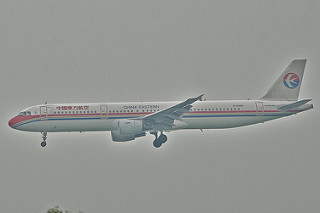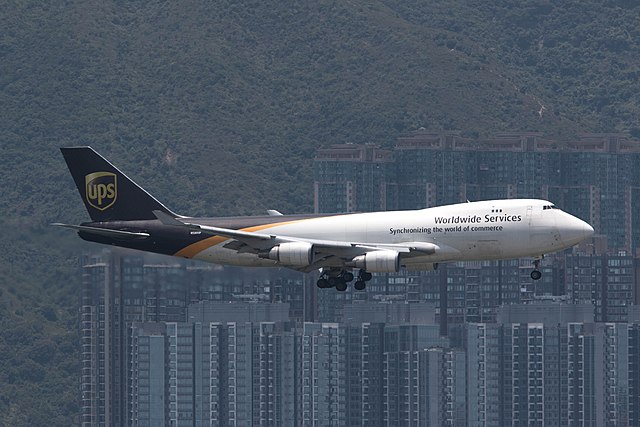China Eastern A333 at Shanghai on Oct 11th 2016, runway incursion forces departure to rotate early and climb over A333
Last Update: March 8, 2020 / 19:01:23 GMT/Zulu time
Incident Facts
Date of incident
Oct 11, 2016
Classification
Incident
Cause
Runway incursion
Airline
China Eastern Airlines
Flight number
MU-5106
Departure
Beijing, China
Destination
Shanghai Hongqiao, China
Aircraft Registration
B-6506
Aircraft Type
Airbus A330-300
ICAO Type Designator
A333
A China Eastern Airbus A320-200, registration B-2337 performing flight MU-5643 from Shanghai Hongqiao to Tianjin (China) with 147 passengers, was accelerating for takeoff from Hongqiao's runway 36L when at about 110 KIAS the crew spotted the A330-300 crossing the runway edge and assessed that they would not be able to stop in time to avoid a collision, however, they would be able to outclimb the A330. The crew firewalled the engines, continued their takeoff run, rotated the aircraft at about 130 KIAS and managed to climb the A320 over the A330. The A320 continued to Tianjin for a safe landing about 100 minutes later.
China's Civil Aviation Authority CAAC reported that the A320 was in their takeoff run when the A330 crossing the runway appeared in front of them. The A320 captain assessed that it was safer to continue, the rest of the flight was without further incident. An investigation into the serious incident has been opened.
On Oct 12th 2016 the CAAC reported that preliminary investigation results suggest the serious incident was caused by a tower controller's misdirected instruction.
On Oct 15th 2016 the CAAC reported that the separation between the aircraft reduced to 19 meters vertical and 13 meters horizontal (wingtip to wingtip) while the A320 climbed over the vertical stabilizer of the A333. Screenshots off and the reconstruction video below.
According to the reconstruction video the A320 lined up runway 36L at taxiway H7. The A333 was taxiing on taxiway H3 and crossed the right runway edge when the A320 was just short of taxiway H4 about 1600 meters/5250 feet into the takeoff run and about 770 meters/2530 feet short of taxiway H3. The A320 became airborne abeam taxiway C2 about 2100 meters/6890 feet into the takeoff run and about 300 meters/1000 feet short of taxiway H3, and crossed taxiway H3 19 meters/62 feet above the vertical tail of the A332.
Chinese media are reporting (no official statement to the sequence of events released by the CAAC so far) that during the presentation of the video it was said, that the A330 had been cleared to cross runway 36L at H3 about 36 seconds prior to the A320 receiving takeoff clearance, by which time the controller had forgotten about the earlier crossing clearance, the A320 crew had not yet been on frequency and therefore had not heard the crossing clearance. After the A330 crossed the hold short line tower called the A330 three times to stop, however, the crew did not listen. The crew also did not check whether the runway was clear prior to cross the hold short line blindly trusting in the ATC instructions. In addition, the cockpit voice recorder of the A330 was not secured and was found overwritten. Takeoff performance computation shows, that even from V1=146 KIAS (with Vr=147 KIAS, V2=151 KIAS) the A320 could have stopped within 475 meters (thus permitting the aircraft to stop more than 200 meters short of H3 had takeoff been rejected abeam H4 at about 110 KIAS), however, the captain had no real time measurements of distances remaining available. The CAAC are going to decide about punishments on Oct 17th.
The CAAC reported late Oct 17th 2016, that preliminary investigation results, the investigation probably being completed in about 20 days, suggest the main cause of the serious incident was negligence by the tower controller, however, the work by the A330 crew was also flawed. The CAAC reported that the A330 was cleared to cross runway 36L, subsequently the A320 was cleared to line up runway 36L and wait followed by takeoff clearance. When the A320 had reached about 110 KIAS the crew spotted the A330 crossing the runway edge, the first officer applied brakes briefly, the commander took control of the aircraft, applied TOGA and accelerated the aircraft to 130 KIAS then rotated the aircraft at 7.03 degrees/second rate and climbed the A320 over the A330, minimal vertical distance between the aircraft was 19 meters, wingtip to wingtip distance was 13 meters. On board of both aircraft were 413 passengers and 26 crew. The tower controller was in violation of standard operating procedures with cross checking not in place (editorial note: incomprehensible what is meant, presumably the controller instructed just out of memory without noting instructions into the ATC system, also preventing the supervising controller to recognize the mistake) and forgot about the earlier crossing clearance when clearing the A320 for takeoff. The A330 crew did not cross check their instructions, did not check the status of the runway before crossing and did not maintain radio contact with tower.
At the same time the CAAC announced that the captain of the A320 is going to receive an award for his actions preventing what would have become China's worst aviation accident otherwise.
On Oct 21st 2016 the CAAC announced that the tower controller in charge as well as the supervisor had their licenses revoked for life, they are not permitted to ever again take a controller position or a supervisory role. The CAAC reaffirmed the A320 captain to be a first class merit and receive an appropriate award.
On Oct 27th 2016 it became known, that the CAAC also fired or reprimanded 13 of their East China Regional Administration Offices as result of the occurrence indicating, that there are systematic issues involved and more people than just the two controllers in charge at the time were at fault, pointing also to the crew of the A330 who turned down their radio and failed to check the runway for any traffic before crossing the hold short line.
On Oct 27th 2016 the CAAC reported in a notification to foreign accident investigation bodies, that the A330 received runway crossing clearance at H3 37 seconds after the A320 was cleared for takeoff, at that time the A320 just began their takeoff run. The occurrence was rated a serious incident, according to ICAO guidelines as A level runway incursion (ICAO definition: "A serious incident in which a collision is narrowly avoided."), and is being investigated by China's Accident Investigation Branch.
On Mar 6th 2020 The Aviation Herald received the final report in Chinese, however, was asked to not publish it (the CAAC have not published the report to date) unless the CAAC is going to release it to the public. We were permitted to summarize it as per usual, though.
The final report concludes the probable causes of the serious incident were:
The controller at the west tower of Hongqiao's Airport issued a takeoff clearance to the A320 aircraft in violation of the Basic Flight Regulations of the People's Republic of China and the East China Air Traffic Control's Operations Manual, in particular he did not carry out continuous effective visual observation. He subsequently issued at runway crossing clearance to the A330 without accurately grasping the dynamics of the A320.
The incident was determined to be a Class A runway incursion which constitutes a serious incident.
The CAAC analysed that the weather was fine and airworthy, there was no evidence that the visual observation by both tower or flight crews were affected by weather.
The A320 had been issued takeoff clearance for runway 36L and was in the initial stages of the takeoff roll, their focus was on their aircraft. When tower cleared the A330 to cross runway 36L, with a different callsign, the A320 crew did not detect that this instruction could lead to conflict.
When the A320 had accelerated to 143 KIAS the flight crew determined the A330 had a tendency to invade their runway. The observer in the cockpit, on the observer's seat, immediately inquired with tower. With Vr=149 KIAS the first officer in the right hand seat began to immediately pull the side stick to 5.54 degrees nose up and applied brakes, within 2 seconds the aircraft pitched up 1.05 degrees nose up, the nose gear's air/ground switch switches to air. The first officer released stick pressure to 1.76 degrees nose up, the nose gear settled on the ground again and the air/ground switch returned to ground within one second after switching to air. The aircraft was now 590 meters ahead of the intersection with taxiway H3.
During those 4 seconds the first officer's actions showed he was hesitant to make a decision seeing the other aircraft in front of them.
The IAS had increased to 154 knots when the captain in the left hand seat began controlling the aircraft and pulled the side stick to the mechanical stop nose up and at the same time pushed the thrust levers from FLEX/MCT detent into the TOGA detent. Within 2 seconds the aircraft rotated to 8.44 degrees nose up, the first officer pulls his side stick to 3.69 degrees nose up triggering a "dual input" aural warning. About 250 meters before the intersection with taxiway H3 the main wheels became airborne.
The investigation team believes the captain took decisively control of the aircraft within 3 seconds, thus within the safety standards, and applied extreme control until the aircraft left the ground.
At the time the crew recognized the A330 had a tendency to enter their runway, their speed was V1-5 knots, the crew however had difficulty to determine the distance between the two aircraft. When the crew realized that the A330 had indeed entered their runway, their speed was already beyond V1, the decision to continue takeoff therefore was correct.
The A330 had landed on runway 36R being in radio contact with a different controller, the crew therefore could not hear the takeoff clearance for the A320. The aircraft was handed off to the controller handling runway 36L and received a hold shot runway 36L instruction, 7 seconds later they were cleared to cross runway 36L at H3, the nose of the aircraft crossed the hold short line of runway 36L shortly afterwards. 6 seconds after crossing the hold short line the engines were accelerated, the aircraft crossed the right hand edge of the runway and entered the runway, the aircraft was accelerating. 4 seconds after the aircraft had reached 10 meters into the crossing the aircraft reached 25 knots over ground.
Standard Operating Procedures require the crew to visually check there is no aircraft activity in the approach sector and check the navigation display's TCAS display before crossing a runway. The crew did observe an aircraft at the southern end of the runway 36L before crossing the hold short line of runway 36L, however, did not conduct an effective and continous observation of the runway and did not confirm the dynamics of the A320. At the same time the A330 crew heard several aircraft reporting "ready for departure" with tower acknowledging "Roger" but without providing takeoff instructions. The crew concluded the A320 at th southern end of runway 36L was waiting for takeoff clearance. When the crew discovered the A320 was in the takeoff run, the crew increased their thrust to beyond normal taxi thrust settings in order to accelerate their crossing. The crew subsequently heard the A320 inquiring, tower instructed to hold position to them twice, they crew - already on the runway - ignored those instructions and continued to complete the runway crossing.
The investigation team believes, although the A330 crew did receive clearance to cross the runway, they did not apply continous and effective monitoring of the aircraft at the southern end of the runway ahead, did not detect the dynamics of the A320 and thus failed to reduce the risk of runway incursion. However, when tower instructed them to hold position twice, they crew assessed correctly and did not execute the wrong instructions.
The A320 crew could not submit their report while in flight and submitted their report after landing in Tianjin. The A330 crew submitted their report immediately after the occurrence but had not realized the severity of the occurrence, their factual narrative was not accurate. The tower controller reported the runway incursion to his supervisor, the control tapes were listened to, however, did not use the surveillance radar video for assessment. The tower controller believed the time between takeoff clearance and crossing clearance was longer, the A320 should have left the ground already by that time. Only 3 hours after the occurrence the supervisor instructed to review the radar surveillance video, at which time both supervisor and tower recognized the severity of the runway incursion. At that time the supervisor reported the occurrence to their superior department with an objective delay.
The tower controller had instructed the A320 to hold short of runway 36L when he needed to take a bathroom break. The assistant controller, fully qualified to work as tower controller, took over while remaining in his assistant seat, however, was observed to operate without headphones. Although he had radar display, electronic process order, ground surveillance radar and VHF control panel, the assistant had difficulty to grasp the real time traffic dynamics. In addition, the hand over procedure between the two controllers was not followed. The assistant's seat height is not as high as the tower controller's seat. As result the external visual observation is not as good from the assistant's seat than on the tower controller's seat. The pillars of the tower cab also obstructed the view onto the south end of runway 36L from the assistant's seat.
Just when the A320 began their takeoff run the assistant was querying other controllers whether they had teir radio volumes turned fully up. When the A320 queried about the other aircraft the controller changed his posture and began to keep an eye on the dynamics near H3 and issued a hold position twice, however, still did not pay necessary attention to the situation and did not notice the conflict between the two aircraft. His attention was still more focussed on his own weak radio, he got out of his seat to have the radio replaced.
The assigned tower control returned to his seat and remained unaware of the runway incursion.
The supervisor also did not follow relevant regulations and did not use effective and continous visual observation as well as use their monitoring equipment to monitor and grasp the dynamics. Loss of situational awareness, unable to identify and correct controllers' mistakes, lost the opportunity to avoid runway incursions.
Metars:
ZSSS 110530Z 05005MPS CAVOK 25/09 Q1017 NOSIG
ZSSS 110500Z 03005MPS 360V070 CAVOK 25/10 Q1017 NOSIG
ZSSS 110430Z 06004G09MPS 320V100 CAVOK 25/11 Q1018 NOSIG
ZSSS 110400Z 06005MPS CAVOK 25/11 Q1018 NOSIG
ZSSS 110330Z 06004G11MPS 010V090 CAVOK 24/11 Q1018 NOSIG
ZSSS 110300Z 04005MPS 010V090 CAVOK 24/12 Q1019 NOSIG
ZSSS 110230Z 02006MPS CAVOK 23/13 Q1019 NOSIG
ZSSS 110200Z 04004MPS 010V080 CAVOK 23/13 Q1020 NOSIG
ZSSS 110130Z 04006MPS CAVOK 23/14 Q1020 NOSIG
ZSSS 110100Z 04005MPS 010V100 CAVOK 22/14 Q1020 NOSIG
Incident Facts
Date of incident
Oct 11, 2016
Classification
Incident
Cause
Runway incursion
Airline
China Eastern Airlines
Flight number
MU-5106
Departure
Beijing, China
Destination
Shanghai Hongqiao, China
Aircraft Registration
B-6506
Aircraft Type
Airbus A330-300
ICAO Type Designator
A333
This article is published under license from Avherald.com. © of text by Avherald.com.
Article source
You can read 2 more free articles without a subscription.
Subscribe now and continue reading without any limits!
Read unlimited articles and receive our daily update briefing. Gain better insights into what is happening in commercial aviation safety.
Send tip
Support AeroInside by sending a small tip amount.
Related articles
China Eastern B738 near Guangzhou on Mar 21st 2022, lost altitude and impacted terrain
A China Eastern Boeing 737-800, registration B-1791 performing flight MU-5735 from Kunming to Guangzhou (China) with 123 passengers and 9 crew on…
China Eastern A332 at Shanghai on Dec 9th 2023, could not retract landing gear
A China Eastern Airbus A330-200, registration B-6538 performing flight MU-533 from Shanghai Pudong (China) to London Heathrow,EN (UK), was climbing…
China Eastern A333 near Xiamen on Dec 3rd 2023, uncontained engine failure
A China Eastern Airbus A330-300, registration B-8970 performing flight MU-721 from Shanghai Hongquiao to Hong Kong (China), was enroute at 10400…
China Eastern A332 near Wuhan on Aug 14th 2023, power bank began to smoke
A China Eastern Airlines Airbus A330-200, registration B-5930 performing flight MU-6958 from Lhasa to Shanghai Pudong (China), was enroute at 10,700…
China Eastern A321 at Hong Kong on May 24th 2017, runway excursion on landing
A China Eastern Airbus A321-200, registration B-6366 performing flight MU-765 from Nanjing to Hong Kong (China) with 132 passengers and 9 crew, was…
Newest articles
Delta B763 at New York on Apr 26th 2024, emergency slide trouble
A Delta Airlines Boeing 767-300, registration N176DN performing flight DL-520 from New York JFK,NY to Los Angeles,CA (USA), was climbing out of JFK's…
UPS B744 at Tokyo on May 6th 2023, hard touchdown on windshear recovery
A UPS United Parcel Service Boeing 747-400, registration N580UP performing flight 5X-109 from Shanghai Pudong (China) to Tokyo Narita (Japan), was on…
Subscribe today
Are you researching aviation incidents? Get access to AeroInside Insights, unlimited read access and receive the daily newsletter.
Pick your plan and subscribePartner

A new way to document and demonstrate airworthiness compliance and aircraft value. Find out more.

ELITE Simulation Solutions is a leading global provider of Flight Simulation Training Devices, IFR training software as well as flight controls and related services. Find out more.

Your regulation partner, specialists in aviation safety and compliance; providing training, auditing, and consultancy services. Find out more.
AeroInside Blog
Popular aircraft
Airbus A320Boeing 737-800
Boeing 737-800 MAX
Popular airlines
American AirlinesUnited
Delta
Air Canada
Lufthansa
British Airways

